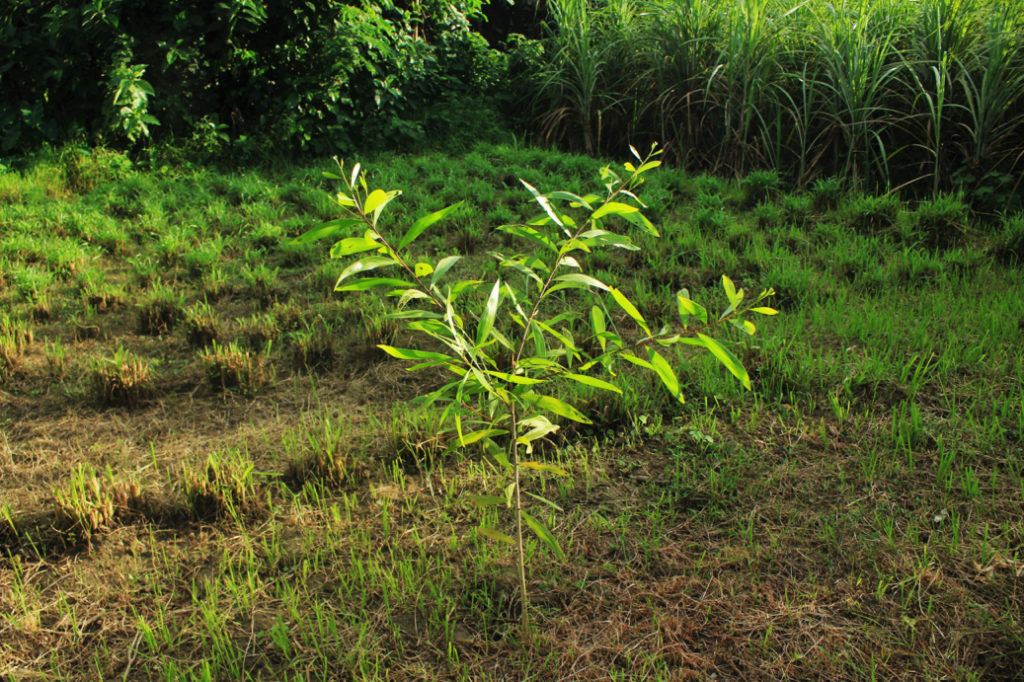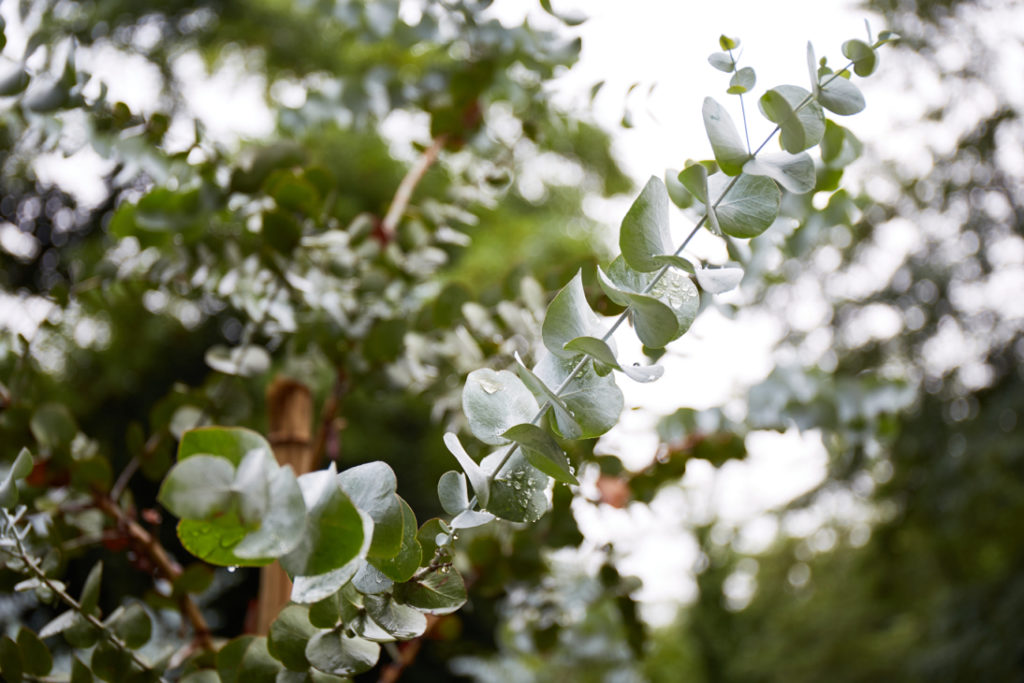Make Sure You Plant Eucalyptus In Full Sun With Enough Room, Says Horticulturist

TREES > EUCALYPTUS
Reviewed By COLIN SKELLY

Colin is a Horticulturist and Horticultural Consultant with experience in a range of practical and managerial roles across heritage, commercial and public horticulture. He holds the Royal Horticultural Society’s Master of Horticulture award and has a particular interest in horticultural ecology and naturalistic planting for habitat and climate resilience.
EUCALYPTUS GUIDES
Ranging in size from small shrubs to tall trees, eucalyptus is an evergreen plant hailing from Australia which is commonly associated with its native country and the koala bears who feast upon it.
But despite having their roots down under, these impressive specimens have taken to the British climate remarkably well and most varieties available on home shores are considered fairly hardy.
They’re a popular choice with gardeners up and down the country for their bluish-grey bark, which peels away in strips to reveal a startling yellow beneath, as well as their blue-green foliage.
Their leaves exude a distinctive scent when crushed.
Overview
| Botanical Name | Eucalyptus |
| Common Name(s) | Gum Tree |
| Plant Type | Tree / Shrub |
| Native Area | Australia |
| Hardiness Rating | H5 (varies by type) |
| Foliage | Evergreen |
| Flowers | Cone-shaped and grouped together in threes |
| When To Plant | May-September |
| When To Prune | February-March |
Sunlight
Preferred
Full Sun
Exposure
Exposed or Sheltered
Size
Height
Up to 30M
Spread
Up to 30M
Bloom Time
Summer / Autumn
Soil
Preferred
Most fertile soils
Moisture
Well-drained
pH
Any
Planting Eucalyptus
Most varieties of eucalyptus require plenty of time to establish themselves before the colder temperatures set in, so planting in spring or summer is recommended.
However, there are certain species, such as E. coccifera (or the Tasmanian snow gum) which prefer planting later in the year in September, October and November.
If in doubt, check the planting instructions with the nursery or vendor.
Positioning
Eucalyptus are generally quite forgiving of soil types, as long as the terrain drains effectively.
However, they do demand full exposure to the sun and appreciate some shelter from the wind, so a spot next to a fence or wall might be ideal.

Most eucalyptus species do perfectly well in pots and containers, too.
While a certain degree of care and maintenance will be required in the first few years after planting in order to allow the tree to establish itself in the ground, they can largely be left to their own devices afterwards.
Pruning, coppicing and pollarding are all viable means of altering the shape and size of the tree as it develops, though none are essential if the location and conditions in which it is planted are satisfactory.

“I have come across many eucalyptus trees that have been planted in positions that are too small for the eventual size of the tree,” says Horticultural Consultant Colin Skelly.
“Many species grow very quickly and dominate a space. Coppicing and pollarding are a really good way to retain the tree whilst allowing in more light and moisture.
“The juvenile leaves of the new foliage are also very attractive.”
Shade Growing
Although eucalyptus is a fairly undemanding plant, its one prerequisite for healthy growth is full sun exposure.
As such, they are not well suited to growing in the shade.

Having said that, there are certain eucalyptus cultivars which can handle partial shade better than others.
These include E. crenulata and E. neglecta – but even so, both of these cultivars will require at least some sunlight.
Planting Out
Plant your eucalyptus in a hole that’s slightly bigger than the root ball, taking care not to disturb the roots when doing so.
If planting seeds, use root trainers to establish them initially, before transplanting them into their final position no later than midsummer.
Bear in mind the potential height and spread of the species you possess, planting the root ball at an appropriate distance from other plants or buildings to allow for their development.

In general, it’s advisable to opt for smaller cultivars, since they will establish themselves more quickly and easily and won’t pose problems in their later life.
Eucalyptus does not require enrichment of the soil by manure, since this will only encourage an excess of leafy growth.
However, they do appreciate mulching of organic matter around (but not directly next to) the trunk, as well as regular maintenance to rid the area of weeds for the first few years.
Supports are to be actively discouraged, since cultivating eucalyptus without the aid of them will instigate stronger root growth.
Eucalyptus Tree Care
Once established, eucalyptus trees require very little in the way of upkeep.
However, very young specimens will certainly benefit from a helping hand, even for several years after their initial planting.
Light
Exposure to full sun is a must throughout their entire lifespan for most eucalyptus species.
Soil
As long as good drainage is guaranteed, eucalyptus trees aren’t fussy about the soil beneath their feet.

Mulching is recommended for the first few years of their life, but the use of manure is overkill and will result in overly leafy growth.
Water
Water the seeds or root ball well to facilitate the settling-in process.
Until the tree has firmly taken root after a couple of years, watering should only be necessary during dry spells and not at all thereafter.
Temperature & Humidity
Most varieties of eucalyptus that are cultivated in the UK are fairly resilient against the elements and won’t require mollycoddling during the winter months.
Having said that, if your tree is planted in a pot, you might want to move it to a warmer area when the mercury drops.
Rather than temperature or humidity, the biggest consideration to keep in mind is waterlogged soil.

If your part of the country is particularly prone to excessive rain or snow during winter, you might want to shelter it from the worst downpours.
Potted specimens can be raised up on bricks to keep drainage holes clear.
Pruning
Generally speaking, there’s no need to prune eucalyptus trees, since they are more than capable of looking after themselves.
However, those growing the species for ornamental reasons may wish to prune it in order to prevent foliage from reaching maturity, since the juvenile form of the leaves is often considered more attractive.

Initial pruning at the beginning of the plant’s life can also be beneficial in shaping its growth.
Similarly, you might wish to prune larger species to prevent them from becoming too big for their environs.
This can easily be achieved by coppicing or pollarding in springtime.
It should not be practised more regularly than every couple of years.
Common Types
There are over 700 varieties of eucalyptus found in the plants that are native to Australia, but just 15 of those grow outside its borders.1Eucalyptus. (n.d.). Botany Bay Learning Resources. Retrieved March 15, 2023, from https://originsfestival.bordercrossings.org.uk/sites/default/files/2022-05/Eucalyptus.pdf
Here are two of the most popular and commonly found varieties in the UK, both of which have received the RHS Award of Garden Merit (AGM) and can be readily purchased at garden centres around the country:
Eucalyptus dalrympleana

Capable of growing up to 15m in height and around half of that in spread, E. dalrympleana (or the mountain gum tree, as it is more commonly known) is a fast-growing evergreen tree.
It’s instantly recognisable by its grey-white bark which flakes away freely, as well as its drooping, narrow, grey-green leaves.
Younger leaves carry a copper tint, while white flowers appear in summer and autumn.
Eucalyptus gunnii

Also known as the cider gum tree, E. gunnii is slightly larger than E. dalrympleana.
It can grow up to 25m in height and 10m in spread, with its peeling cream and brown bark a common sight around the UK.
Its foliage begins life rounded and bluish, before developing a thinner and greyer form as it grows.
Tightly bunched clusters of small white flowers appear in the summer.
References
- 1Eucalyptus. (n.d.). Botany Bay Learning Resources. Retrieved March 15, 2023, from https://originsfestival.bordercrossings.org.uk/sites/default/files/2022-05/Eucalyptus.pdf

